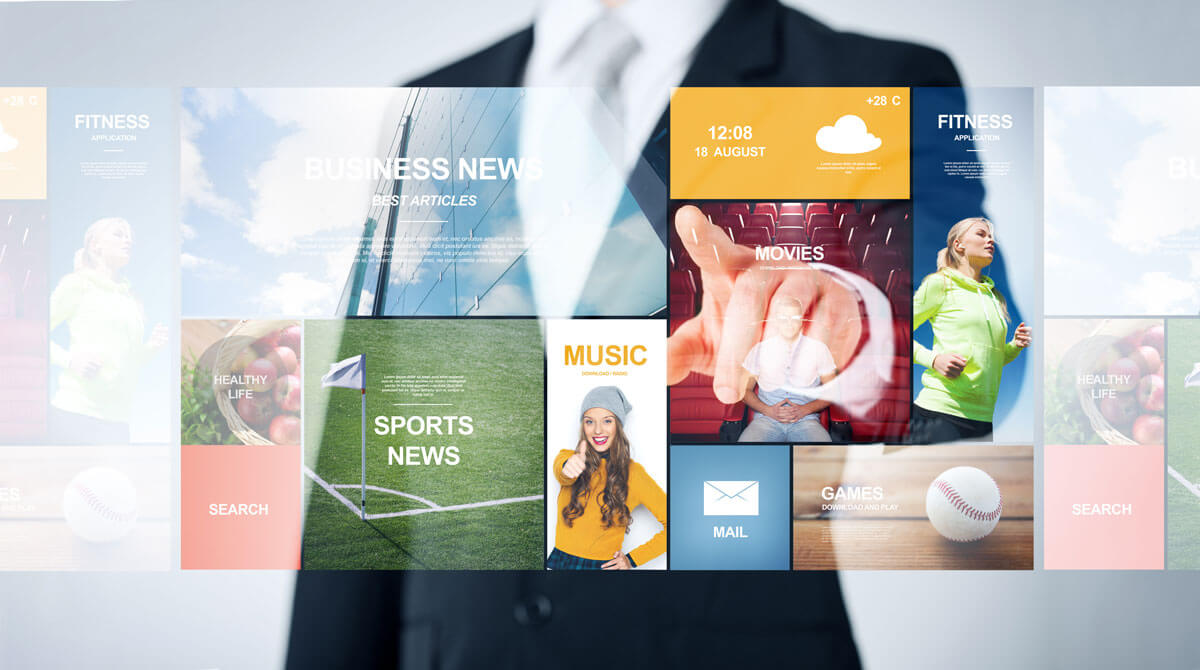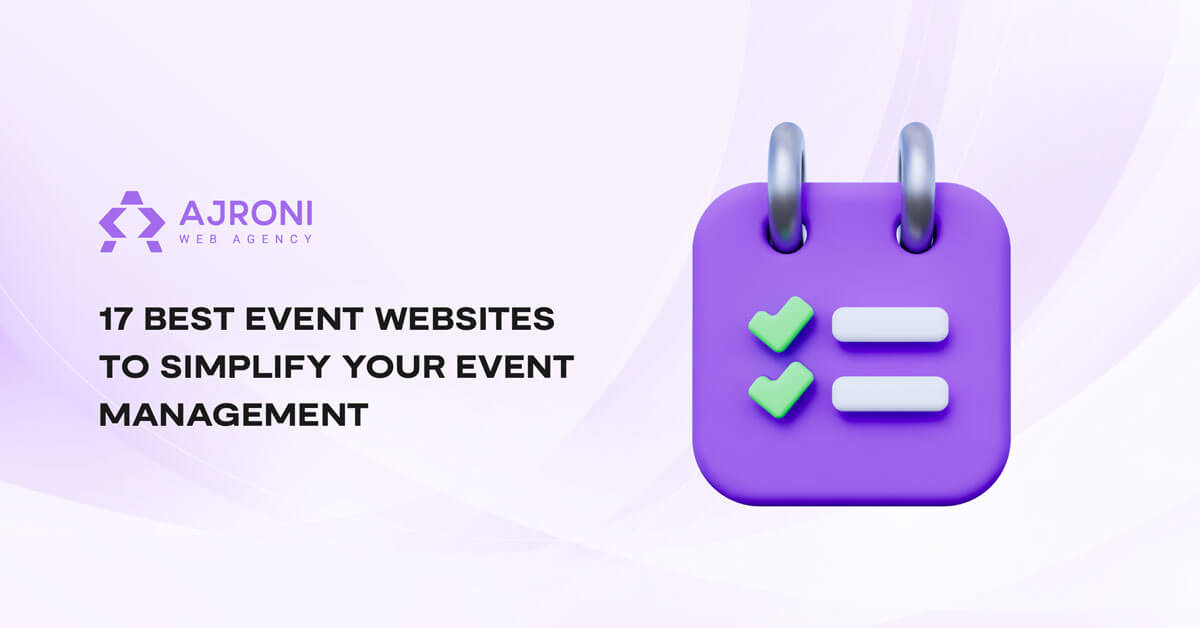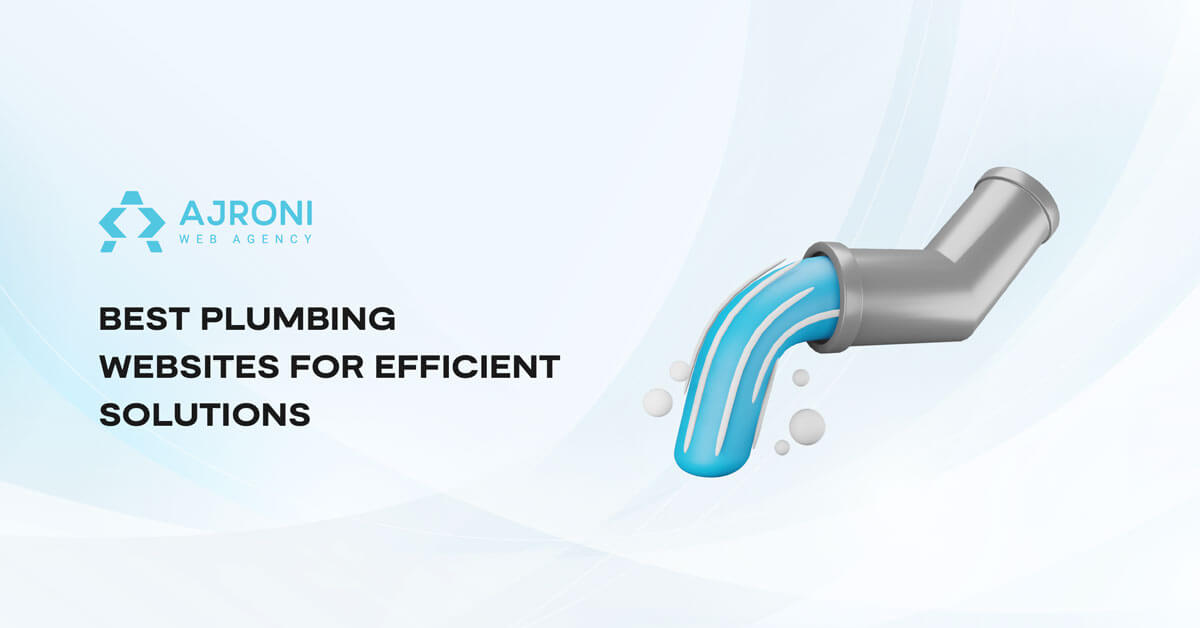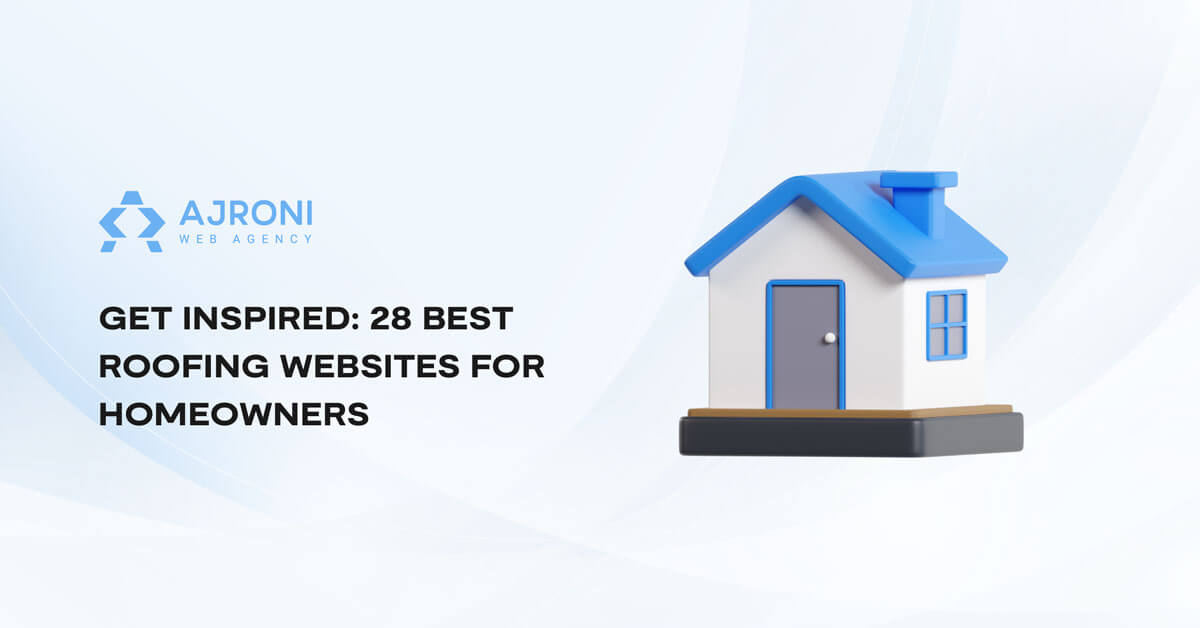Whether you are just building a website for the first time or already a pro, it is important to know the different types of website design available today. In this blog, we will study different types of designs and elements that make an impact– from functionality to aesthetics and user experience (UX). We'll also look at some successful website examples to get you inspired. So let's get started!
What Does Website Design Include?
The design of a website is one of the most important elements to consider when building it from scratch, as it will either attract or keep away users.
Building a website requires detailed consideration of its visual elements, layout, and functionality. This involves everything from graphics, UI, UX, and front-end development.
Achieving a balance between all the design elements means strategically using colors, typography, images, and interactive elements to craft an aesthetic, user-friendly website.
What Contributes to Good Website Design
Visual Appearance
A visually appealing website design attracts users and leaves the first impression. This includes color scheme, typography, images, and overall aesthetics.
User Experience (UX)
A well-designed website provides an intuitive user experience. It involves easy navigation, clear hierarchy, and user-friendly interface elements.
Responsiveness
With the rise of mobile usage, a good website design must be responsive, adapting smoothly to different screen sizes and devices. Mobile-friendly designs guarantee a positive and problem solving user experience.
Accessibility
Making the website accessible to all users is a game changer. Incorporating accessibility features like alt tags for images, proper heading structure, and keyboard navigation enhances usability for everyone.
Content Organization
Organizing content improves user engagement. Clear headings, appropriate spacing, and logical information hierarchy help users find what they’re looking for quickly and easily.
Loading Speed
Slow loading times can lead to user frustration and abandonment. Optimizing image sizes, caching techniques, and minimizing unnecessary scripts contribute to faster loading speeds.
Consistency
A consistent design process across pages establishes a professional look. Consistency in branding, color schemes, typography, and layout elements helps users navigate and understand your website better.
Call-to-Action (CTA)
Well-placed and compelling CTAs encourage user interaction, such as signing up for a newsletter, purchasing, or contacting you. Clear and visually prominent CTAs can drive conversions.
Search Engine Optimization (SEO)
A good website design incorporates SEO best practices, including optimized page titles, meta descriptions, relevant keywords, and proper HTML structure.
Website Layout vs. Website Design
These two terms are often intertwined, and sometimes it’s confusing to understand what sets them apart.
The website layout refers to the organization of elements on a web page. For example, the positioning, structure, and flow of content within the page. The layout includes the placement of headers, menus, sidebars, content sections, images, and other visual components. It focuses on the structural aspects and the ratio between different elements on the page. Also, the layout determines how users navigate the website and interact with the content.
On the other hand, website design is a creative process that involves conceptualizing and composing a visually appealing appearance of a website. It focuses on branding, user experience, and effectively communicating the purpose or message of the website.
Responsive Website Design
The term “responsive design” refers to the process of building websites whose layout fits the user’s device and screen size. Due to the overall use of mobile devices, responsive design has grown significantly in relevance over the past several years. Website content can be easily resized and formatted using flexible grids, graphics, and CSS media queries.
Benefits of Responsive Design for User Experience
Responsive design improves user engagement and decreases bounce rates. By adapting to the screen size, users can access and interact with content without excessive scrolling or zooming. This saves time and resources by eliminating the need for separate mobile and desktop versions of a website. And it allows marketers to spend more time engaging with their audience and less worrying about website maintenance.
Successful Responsive Website

Screenshot taken from Starbucks’ website
Nowadays, many websites have successfully embraced responsive design to deliver exceptional user experiences. One famous example is the website of Starbucks. Through responsive design, Starbucks allows users to scroll on their websites, whether from a desktop, tablet, or smartphone. This simple but effective strategy delivers a consistent brand experience, allows for easy ordering, and provides information to customers on the go.
Minimalist Website Design
Another popular website type is minimalist design. Minimalist design is characterized by its simplicity, clean lines, and focus on essential elements. It embraces the “less is more” philosophy, using white space, limited color palettes, and simple typography. This design removes unnecessary elements and distractions, allowing the core message or content to shine. Minimalist design creates a sense of elegance and sophistication by eliminating clutter and excess embellishments.
Advantages of Minimalist Design for Clarity and Focus
One of the best advantages of minimalist design is its ability to provide clarity and focus. Minimalist websites focus users’ attention on the most important parts of the content or message by eliminating extraneous features. This guarantees that consumers can find what they’re seeking quickly. In terms of aesthetics, the minimalist design encourages serenity and simplicity, resulting in a positive user experience that encourages people to stay on the site longer.
Minimalist Website Examples Across Industries
Minimalist design finds application in various industries, and it’s becoming more popular over the years. For instance, the website of Apple exemplifies minimalist design with its sleek layout, ample white space, and precise typography, highlighting the beauty and functionality of its products.
The website of Dropbox demonstrates how minimalist design can enhance the user experience by presenting a clean and intuitive interface for effortless file sharing and storage.
These examples from various industries illustrate the power of minimalist design in conveying a clear message, enhancing usability, and creating a visually pleasing experience.
Parallax Website Design
Parallax design is a technique that creates an interesting browsing experience by using scrolling effects. It involves the background and foreground elements moving at different speeds as the user scrolls, which creates a captivating three-dimensional effect. The parallax effect adds depth and dynamism to the website, making it visually appealing and interactive.
Benefits of Parallax Design for Visual Storytelling
By incorporating parallax scrolling, websites can guide users through a narrative journey, revealing content in a compelling and sequential manner. This technique enables designers to craft immersive storytelling experiences, grabbing users’ attention and evoking emotional connections. Parallax design can also be used to emphasize key messages, showcase product features, or present a brand’s unique story in a visually engaging way.
Notable Examples of Parallax Websites and Their Impact

Screenshot taken from Nikes’ website
Many websites have already successfully used parallax design to create memorable experiences. A prime example is the website of Nike Better World, which showcases its commitment to sustainability. Through parallax scrolling, the website takes visitors on a journey to explore its eco-friendly initiatives, effectively conveying its message and reinforcing its brand values.
Single-Page Website Design
Single-page design is a concept that revolves around the idea of presenting all the content and information of a website on a single page, eliminating the need for multiple pages and navigation. This design approach condenses the entire website into a seamless scrolling experience. The content is organized into different sections or blocks, allowing users to easily navigate and explore the information without needing page reloads or excessive clicking.
Advantages of Single-Page Design for Simplicity and User Engagement
The single-page design offers several advantages, primarily centered around simplicity and user engagement. By eliminating the complexity of multi-page navigation, single-page websites provide a streamlined and intuitive browsing experience.
Users can effortlessly scroll through the content, resulting in quicker access to information. This simplicity also enhances mobile responsiveness, making single-page designs ideal for viewing on smartphones and tablets.
The single-page design encourages user engagement by presenting information in a visually appealing and digestible format. The continuous scroll allows for a storytelling approach, where the content unfolds gradually as users progress down the page. This experience captivates visitors and encourages them to stay on the website longer, increasing the chances of conversions.
Effective Single-Page Websites

Screenshot taken from Mailchimps’ website
An impressive single-page website is of MailChimp’s “Did You Mean?” campaign. The website delivers a captivating interactive experience, guiding users through a series of playful animations and engaging content. The single-page format enhances the storytelling and ensures the message is communicated effectively.
Interactive Website Design
Dynamic components and features that enable visitors to interact with the website content actively are referred to as interactive website design. The interactive design aims to make the user experience more engaging and participative so that users can engage, react, and affect how a website works. Animations, sliders, tests, games, forms, and other interactive features can be used to increase user interest and foster fruitful interactions.
Benefits of Interactive Elements in Engaging Users
Interactive elements engage users and create memorable experiences. They provide a sense of interactivity and personalization, making visitors feel involved and connected to the website. Interactive design can capture attention, increase time spent on the site, and improve user retention rates. By incorporating different features, websites enhance user satisfaction, promote brand loyalty, and drive conversions. Also, interactive elements enable businesses to gather valuable user data and insights, facilitating targeted marketing strategies and improving overall user engagement.
Examples of Interactive Websites with Innovative Features
A very interesting example is the website of Red Bull Rampage. It offers an immersive 3D interactive experience where users can explore the mountain biking event through a virtual landscape. The website allows users to view videos, check out interactive maps, and delve into the event’s history, providing an engaging and interactive platform for sports enthusiasts.
E-commerce Website Design
E-commerce website design refers to the specialized approach of creating online platforms for buying and selling products or services. It involves strategically integrating design elements that enhance user experience, facilitate smooth transactions, and drive conversions. E-commerce design focuses on creating intuitive navigation, visually appealing product displays, secure payment gateways, and seamless checkout processes. The goal is to create a user-friendly and visually engaging interface that encourages visitors to browse, explore, and make purchases with ease.
Key Considerations for Successful E-commerce Websites
Successful e-commerce websites incorporate several key features and considerations to optimize the online shopping experience. They prioritize responsive design to provide compatibility across devices.
Clear and persuasive product descriptions, high-quality images, and customer reviews all build trust and assist purchasing decisions.
Adequate categorization and filtering options enable users to find products quickly.
Streamlined checkout processes with secure payment gateways and multiple payment options instill confidence.
Integration with inventory management systems and customer relationship management tools streamline operations and enhance customer service.
Case Studies of Exemplary E-commerce Designs
One such example is Shopify, an e-commerce platform that showcases a wide range of online stores built using their software. The websites created on Shopify exhibit various design styles, reflecting the versatility and flexibility of the platform. From fashion and electronics to niche products, these websites demonstrate effective product displays, seamless navigation, and robust e-commerce features.
Conclusion
Website design is an important element of any website experience, as it can draw customers in or keep them away. With so many different types of design styles available, there is sure to be one that will fit the needs and aesthetic preferences of any website owner. Remember, no matter what type of design style is chosen, an experienced web designer should always aim to create a product that reflects the goals and values of their client.
FAQs
What are the different types of website design?
There are several types of website design, such as responsive design, minimalist design, parallax design, single-page design, interactive design, and e-commerce design. Each type offers unique features and characteristics to cater to specific goals and user experiences.
How do I choose the right type of website design for my project?
There is no right or wrong answer to this, as it depends on the nature of your business, target audience, content requirements, and desired user experience. Consider your goals, branding, and the functionality you need to determine which type of design aligns best with your objectives.
What are some of the benefits of responsive website design?
Responsive website design ensures that your site adapts to different screen sizes and devices, providing a great user experience across desktops, tablets, and smartphones. It improves accessibility, boosts SEO performance, and enhances user engagement by delivering consistent and visually appealing layouts.
How does minimalist website design benefit my website?
Minimalist website design focuses on simplicity, clarity, and minimalistic elements. It improves website loading speed, improves user readability, and creates a visually pleasing and uncluttered browsing experience. The minimalist design helps to prioritize key content and directs user attention to important elements.
What is the significance of parallax website design?
Parallax website design uses scrolling techniques to create a visually dynamic and engaging experience. It adds depth and interactivity, enabling storytelling and captivating user attention. Parallax design enhances user engagement, drives conversions, and creates a memorable browsing experience.
When should I consider a single-page website design?
Single-page website design suits projects with concise content, limited offerings, or a specific narrative flow. It simplifies navigation, provides a seamless scrolling experience, and allows users to quickly access the desired information without needing multiple page loads.




